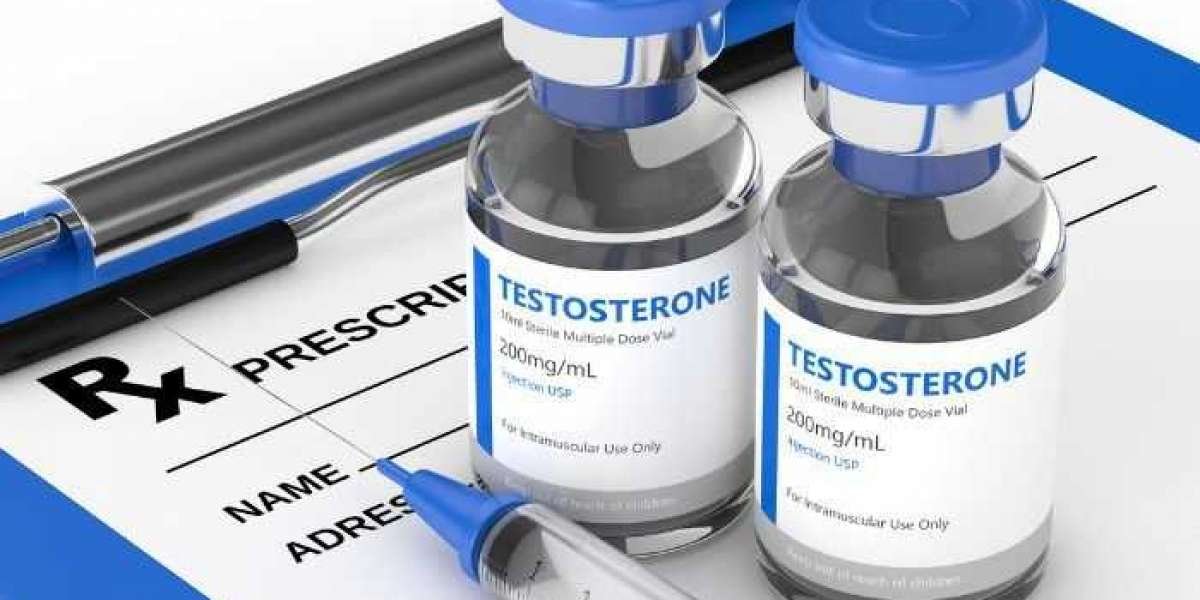What is Testosterone Replacement Therapy?
Testosterone Replacement Therapy (TRT) is a medically supervised treatment designed to restore optimal testosterone levels in men experiencing low testosterone, also known as hypogonadism. This therapy helps combat symptoms such as fatigue, reduced muscle mass, low libido, mood swings, and cognitive decline.
How Testosterone Replacement Therapy Works
TRT involves supplementing testosterone through injections, gels, patches, or pellets to bring levels back to a healthy range. Since testosterone is a key hormone influencing metabolism, muscle growth, bone density, and mental clarity, maintaining balanced levels is crucial for overall well-being.
Benefits of Testosterone Replacement Therapy
1. Increased Energy and Stamina
Men undergoing TRT often report higher energy levels, reduced fatigue, and enhanced endurance, making everyday activities easier and workouts more effective.
2. Improved Muscle Mass and Strength
Testosterone plays a vital role in muscle growth and maintenance. TRT helps individuals regain lost muscle mass and improve strength through enhanced protein synthesis and reduced muscle breakdown.
3. Enhanced Libido and Sexual Health
Low testosterone is linked to erectile dysfunction, reduced libido, and sexual dissatisfaction. TRT effectively boosts sexual drive and performance, restoring confidence and intimacy.
4. Better Mood and Mental Clarity
Testosterone influences brain function, including memory, concentration, and mood stability. TRT can help alleviate symptoms of depression, anxiety, and cognitive decline, leading to better mental well-being.
5. Improved Bone Density and Joint Health
As men age, bone density naturally declines, increasing the risk of fractures and osteoporosis. TRT helps strengthen bones and support joint health, reducing the likelihood of injuries.
6. Fat Reduction and Improved Metabolism
Testosterone contributes to fat metabolism and muscle-to-fat ratio. Many men on TRT experience decreased body fat, particularly in the abdominal area, leading to a leaner physique.
Types of Testosterone Replacement Therapy
1. Injectable Testosterone
One of the most common and effective forms of TRT, testosterone injections are administered weekly or bi-weekly to maintain steady hormone levels. Common types include testosterone cypionate, enanthate, and propionate.
2. Testosterone Gels and Creams
These topical applications allow testosterone to be absorbed through the skin. They are convenient but require daily application and caution to avoid skin-to-skin transfer to others.
3. Testosterone Patches
Applied to the skin, these patches deliver a controlled dose of testosterone throughout the day. They are a good alternative for those who prefer non-invasive methods but can sometimes cause skin irritation.
4. Testosterone Pellets
Pellets are implanted under the skin and slowly release testosterone over several months. This method provides consistent hormone levels with minimal maintenance.
5. Oral Testosterone
Although less commonly prescribed due to potential liver toxicity, newer formulations of oral testosterone offer an alternative for individuals seeking non-injectable and non-topical options.
Who Can Benefit from Testosterone Replacement Therapy?
TRT is primarily recommended for men diagnosed with clinically low testosterone levels, confirmed through blood tests and medical evaluation. It benefits men experiencing persistent fatigue, reduced libido, muscle loss, cognitive issues, and depression due to hormonal imbalances.
Is Testosterone Replacement Therapy Safe?
When properly monitored, TRT is considered safe and effective. However, like any medical treatment, it carries potential risks such as increased red blood cell count, acne, fluid retention, and possible cardiovascular concerns. Regular blood tests and physician supervision help mitigate these risks.
Potential Side Effects of TRT
While most men tolerate TRT well, possible side effects include:
- Acne and oily skin
- Fluid retention
- Breast tenderness or enlargement (gynecomastia)
- Sleep apnea exacerbation
- Testicular shrinkage due to reduced natural testosterone production
How Often Should You Undergo TRT?
The frequency of TRT administration depends on the treatment method. Injections may be required weekly or bi-weekly, while pellets last for several months. Topical gels and patches require daily application. A doctor will create a personalized plan based on hormone levels and health goals.
Where to Get Testosterone Replacement Therapy?
TRT should be prescribed and monitored by licensed medical professionals. It is available at hormone therapy clinics, urology offices, endocrinologists, and specialized men’s health centers. Always consult a qualified healthcare provider before starting TRT to ensure safe and effective treatment.
Conclusion
Testosterone Replacement Therapy is a highly effective solution for men experiencing low testosterone levels. With multiple treatment options available, TRT can help restore vitality, improve physical and mental well-being, and enhance overall quality of life. Proper medical guidance is essential to ensure optimal benefits and minimize risks.














